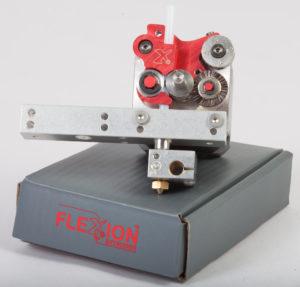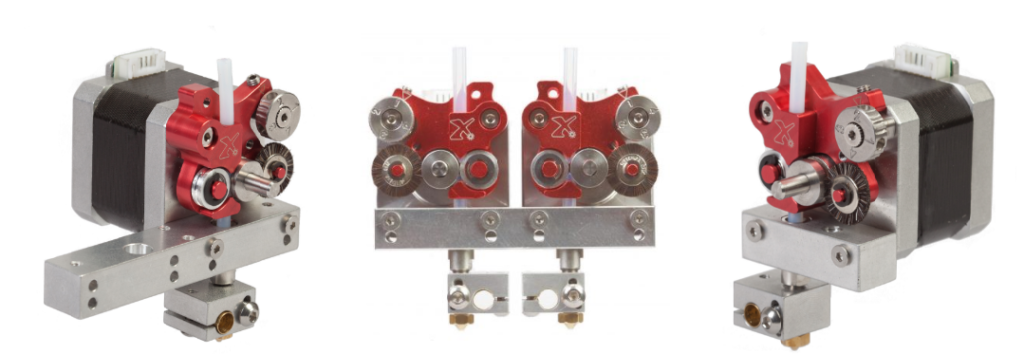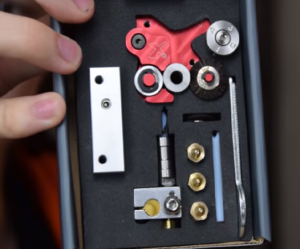 Like many other 3D printing enthusiasts, you may have experienced challenges in using flexible 3D printing filament. Numerous filaments on the market promise strength and flexibility but at the same time present difficulty in making complex parts, causing issues with temperature, clogging, adhesion, and more. We’ve covered the pros and cons you may run into with these materials previously, leaving it up to you to weigh out which benefits work best for you—even if you are running into some tricky areas.
Like many other 3D printing enthusiasts, you may have experienced challenges in using flexible 3D printing filament. Numerous filaments on the market promise strength and flexibility but at the same time present difficulty in making complex parts, causing issues with temperature, clogging, adhesion, and more. We’ve covered the pros and cons you may run into with these materials previously, leaving it up to you to weigh out which benefits work best for you—even if you are running into some tricky areas.
Now, a rather interesting combination has been brought to our attention via Diabase Engineering, a new 3D printing startup co-founded by Stephen Heston—the inventor of NinjaFlex filament. Bringing his expertise and knowledge regarding issues that arise with filaments to a new product, he and his team at Diabase created an extruder that works well with flexible materials, but not only that—promises to imbue your desktop 3D printer with industrial qualities; in fact, ‘low-performance’ hardware may suddenly become much more versatile and reliable, according to Diabase.
 With the Flexion Extruder kit, those at the desktop level should be able to look forward to an exciting upgrade meant to solve numerous issues that the Diabase team saw plaguing the 3D printing space. The Flexion processes more rigid materials than other extruders, and employs a low-friction, low-clearance barrel to convert stepper motor torque and melt pressure with minimal loss.
With the Flexion Extruder kit, those at the desktop level should be able to look forward to an exciting upgrade meant to solve numerous issues that the Diabase team saw plaguing the 3D printing space. The Flexion processes more rigid materials than other extruders, and employs a low-friction, low-clearance barrel to convert stepper motor torque and melt pressure with minimal loss.
With these features, the Flexion offers the much-desired speed 3D printing operator desire, along with greater precision and control; in fact, you can look forward to watching the Flexion extrude materials like 60 ShoreA urethanes—described to be as soft as the eraser of a pencil.
“This is the most precise, effective, and absolutely gorgeous upgrade I have done to a printer so far,” said Patrick Bishop of PB3D Creations.
Offering three configurations, the Flexion can be dropped in to nearly any 3D printer, with two of the configurations being made to retrofit MakerBot Replicator 2x printers quickly. The third configuration is also compatible with E3D’s well known v6 hotend.
“E3D makes a fantastic hotend,” said Austin Reid of Diabase Engineering. “We’re excited to combine the precision of the Flexion drive unit with the high temperature capability and extended reach of the v6 hotend. This setup will be especially useful for RepRap and other DIY printers.”
Diabase, upon receiving funding for 3D printing innovations, was able to release the Flexion Extruder kit in April, marking their debut.
“We collaborated with NinjaTek on the extruder development and continue to work with them on materials testing,” Stephen Heston told 3DPrint.com. “We have received local technology grants and investment for several other longer-term projects related to deposition technology.”
The company reports good sales growth with the extruder kit so far, and has received good 3D printing product reviews, including a recent one from Makers Muse as Angus gave an extensive report. The product caught his eye as he sees many users having difficulty with flexible filaments. He remarks on the nice packaging, complete with four nozzles ranging from .2 to .5 mm, and all the upgrade parts you will need. Assembly took Angus less than one hour.
“It was printing almost straightaway, which is awesome,” said Angus at Makers Muse.
He goes on to explain that this extruder handles flexible materials so well because it is fully supported from the feeder gear to the hotend, as well as being constructed with fixed tension, offering less pressure for flexible materials. Pointing out that the Flexion also has four different tension steps, this may be another key element to its success in printing with a variety of materials. Angus was extremely impressed with his PLA print, indicating no issues with infill at all. Next, using a flexible and ‘really soft’ TPU, the reviewer had success after increasing the temperature, slowing the speed, and modifying some other settings as well—and then even going so far as to print the ubiquitous octopus.
“If you’re serious about taking your 3D printer to the next level, the Flexion Extruder is a no-brainer,” concluded Angus.
The enthusiastic reviewer reported that he would now be using the Flexion all the time, and even when printing with PLA.
Beginning at $149, you can order the Flexion kits directly from Diabase. What are your thoughts on this new product? Discuss further over in the Diabase 3D Printing Extruder Kits forum over at 3DPB.com.
Subscribe to Our Email Newsletter
Stay up-to-date on all the latest news from the 3D printing industry and receive information and offers from third party vendors.
Print Services
Upload your 3D Models and get them printed quickly and efficiently.
You May Also Like
Reinventing Reindustrialization: Why NAVWAR Project Manager Spencer Koroly Invented a Made-in-America 3D Printer
It has become virtually impossible to regularly follow additive manufacturing (AM) industry news and not stumble across the term “defense industrial base” (DIB), a concept encompassing all the many diverse...
Inside The Barnes Global Advisors’ Vision for a Stronger AM Ecosystem
As additive manufacturing (AM) continues to revolutionize the industrial landscape, Pittsburgh-based consultancy The Barnes Global Advisors (TBGA) is helping shape what that future looks like. As the largest independent AM...
Ruggedized: How USMC Innovation Officer Matt Pine Navigates 3D Printing in the Military
Disclaimer: Matt Pine’s views are not the views of the Department of Defense nor the U.S. Marine Corps Throughout this decade thus far, the military’s adoption of additive manufacturing (AM)...
U.S. Congress Calls Out 3D Printing in Proposal for Commercial Reserve Manufacturing Network
Last week, the U.S. House of Representatives’ Appropriations Committee moved the FY 2026 defense bill forward to the House floor. Included in the legislation is a $131 million proposal for...



































